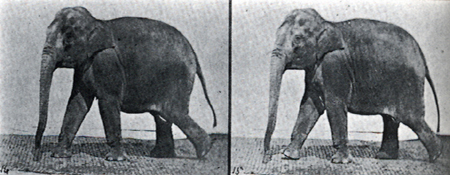 |
||
| Poetry and Song | ||
| HOME The Art of Memory Origin Myth Vivid Imagery Memory Is Personal Your Inner Monty Python The Use of Places Poetry and Song The Grid System Why It Works The Number Mnemonic Free Ass-sociate Conclusion |
The use of “places” to link images together is the most strange and unfamiliar aspect of the classical and medieval art of memory. But a remembered interior – say, your office, as you walk through it – is really no different from the most familiar memory device of all: the song. Think about what a great mnemonic device a song is. It is relatively easy for us to remember the lyrics of songs without even trying. A meter with a rhyme scheme is like a familiar path from an origin to a destination; it serves as a very simple way of linking short bits of information into an order, creating a linear structure. Add to that rhyme scheme a melody, which further distinguishes each line of text, and suddenly it’s not hard at all to rattle off in your head a series of words and images that are either emotionally moving, or strange, or both, in the correct order: There’s a lady who’s sure There’s no chance, in the above text, of mixing up the order of these lines (you just can’t open with “All that glitters is gold,” for example). You may get a few words wrong here or there, but if you grew up in the seventies, whether you liked Led Zeppelin or not, those images (whatever they mean) are indelibly keyed to a certain melody and thus are unforgettable. Like it or not, you can probably sort of vaguely picture the “lady” and her stairway, and the stores, and the glittering gold. Your head is full of songs that you’ve never had to try and remember, you just do. Studies show that people can easily remember whole songs, often after just one or two hearings. This was the original purpose – or part of the original purpose – of song and poetry: Verse creates a structure in which vivid images assume a certain place in a linear sequence; in all cultures everywhere, poetry is sung – it’s how the poet remembers the poem. Homer’s Odyssey was sung. Beowulf was probably sung. That is how complex information – myths, genealogies, laws, and history – are encoded and passed on in oral traditions. In fact, one of the oldest poems in the English language is a poem that had specifically a mnemonic purpose; you probably know it: “Thirty days hath September, April, June and November...” |
You taught me the names of the stars overhead That I wrote down in my ledger. Though all I knew of the rote universe Were those Pleiades, loosed in December. I promised you I’d set them to verse So I’d always remember That the meteorite is the source of the light And the meteor’s just what we see And the meteoroid is a stone that’s devoid Of the fire that propelled it to thee -- Joanna Newsom
|
All material copyright 2006
Eric Wargo